DAy 1:
|
What better way to start a week than a fun 2 days of a BioBlitz Holiday Camp? SPREE couldn’t think of anything better! A BioBlitz is a challenge to find and identify as many species of organisms that you can in a given time and area. Day 1 of our camp, we focused on building naturalist skills.
|
First, we practiced using binoculars & magnifying glasses. It did not take long before campers found a juvenile red-tailed hawk perched on a street light eating prey… and with the start of camp, the bioblitz began! Campers found that binoculars allowed them to see wildlife that was far away and hard to see with the naked eye. Magnifying glasses were great to look at small critters that were on the ground or on plants. Using these tools, campers saw organisms big and small!
The hardest to tell apart from each other are the lynx and bobcat, so campers began by comparing the two species based on observation. They were able to feel the pelt of both a lynx and bobcat- both were very soft! Being able to see these furs up close, it became clear that bobcats have more defined spots! Campers learned that these cats often hide from humans when we are enjoying nature, so only knowing what these cats look like. is not enough. You may only ever see a track! Campers learned how to distinguish lynx and bobcat tracks. Since the mountains are already snowy, we made some snow and practiced making these cats tracks!
The second activity we did on Monday was focused on mountain lions. We started by coming up with as many nicknames for mountain lions as we could- there are over 40 nicknames in just the English language! With nicknames like puma, catamount, cougar and panther, we settled on using “mountain lion” because that is how they were first described in Colorado back in 1858! Mountain lions have adapted well to living in Colorado highlands, so campers made a list of behavioral and physical adaptations that help mountain lions survive. One physical adaptations that campers noted were the spots on baby mountain lions! These spots help the young cats camouflage until they are adults. Adults are top predators and no longer need to camouflage as well.
The third activity of the day was critter crawl. All animals of Colorado need water, and our mountain feline friends are no different. Campers hypothesized the many ways that the wild cats of Colorado would use the South Platte River. While these cats don’t eat the small macroinvertebrates that we like to catch at SPREE, they may still hunt at the River gathering spot, bathe in the river, drink water, or cool off in the breeze by the water. We had a blast getting into the river like cats ourselves, and catching the many creatures in its waters.
We ended our day with a group predator game. Campers learned about the importance of predators, like cats, to our Colorado food web. They quickly learned that it wasn’t easy to survive just because you are a predator! Prey animals have developed their own ways to remain safe in the wild. That doesn’t mean that our cat predators are in trouble; they are super sneaky and have evolved into exceptional hunters!
Day 2:
|
Just like our wild cats come in different sizes in Colorado, so do our wild dogs! We used to have three wild canine species in Colorado, but the wolf was eradicated from our state in the 1940s. Perhaps one day we will see wolves here again, but for now we have foxes and coyotes!
|
Campers learned quickly in their first activity that there are FOUR different species of fox that thrive in Colorado, each unique! You could observe a red fox, gray fox, swift fox, and the small kit fox without leaving the borders of our state. All four species are omnivores, though the smallest, the kit fox, prefers a carnivorous diet when food is plentiful. The largest, and most recognizable fox is the red fox. The swift fox can be seen on the prairies, while the gray fox is the only dog specie you could see climb a tree! Campers learned of foxes physical and behavioral adaptations to survive by dressing up one of their own into a fox! Afterwards, all campers showed off their fox athletic skills. They attempted to jump 16ft in one try and run at 30 mph, just like our foxes can!
The second activity was about coyotes. Coyotes are pack animals whose populations have been on the rise in Colorado over the past 50 years. Coyotes adapt well to their environments and can be seen in many different habitat types including prairies, forests, and cities! These critters get a bad reputation for being mean towards people. However, these animals do not want to hurt people and are more afraid of us than we are of them! Campers learned techniques of what to do (or not to do) if you come across a coyote in the wild. Coyotes are vocal creatures like humans, communicating with others in their pack by sound. Campers went outside to test their coyote communication skills with a game- they all turned into coyotes and separated to hunt. However, to avoid predators, campers/coyotes needed to locate each other using their voices to reform their camp coyote pack! Coyotes value a pack lifestyle to stay safe- protection in numbers!
The third activity of the day was a canine critter crawl. Just like our feline friends use our River, our canine companions need water too! Foxes and coyotes may use the South Platte River as a place for shelter, water, to cool down, or to find food. Foxes actually hunt crawdads! Campers tried their skill at catching crawdads and other macros at our Riverfront- they were pretty successful!
With two days of camp packed with a wealth of information, we ended our camp day with a cats & canine comparison. We had learned the differences between different feline species, and different canine species… but what is different between the two? Campers compared skulls, tracks, physical adaptations, and behavioral adaptations of cats and canines to determine the differences. While these two groups of Colorado animals differ from each other, what campers determined is that both are suited uniquely well to survive in our state!

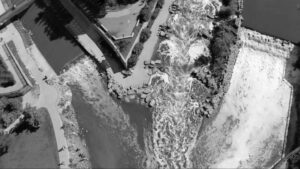
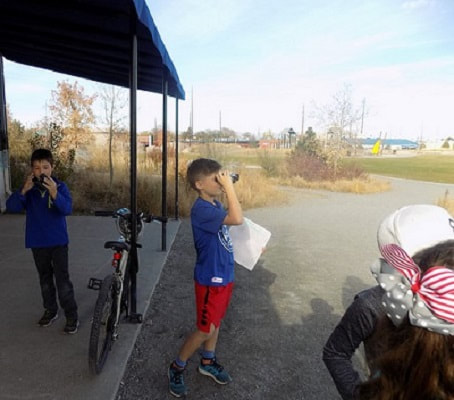

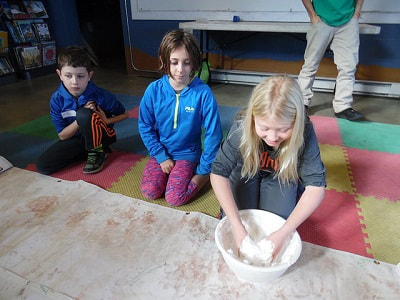

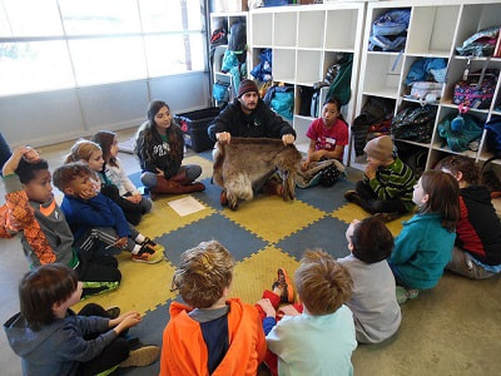
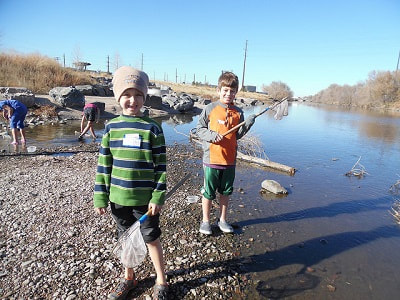
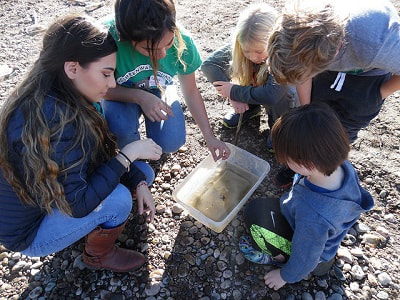
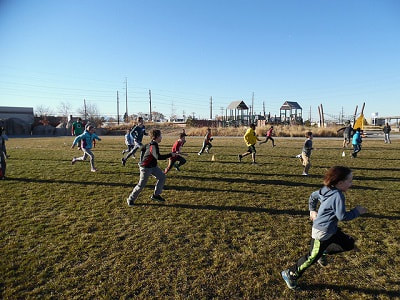
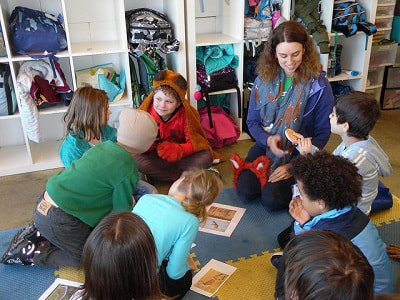
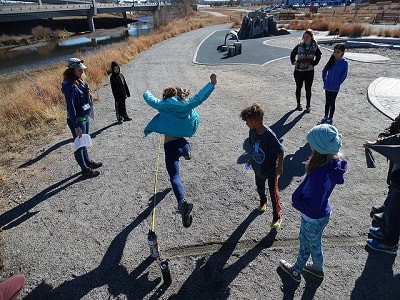
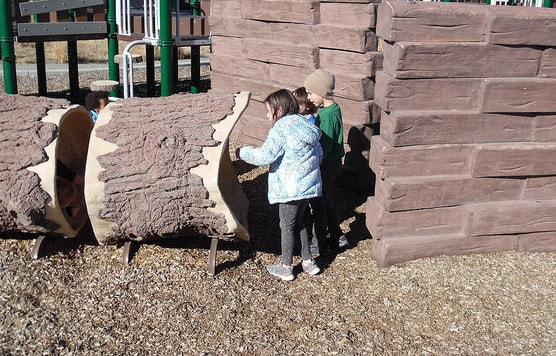
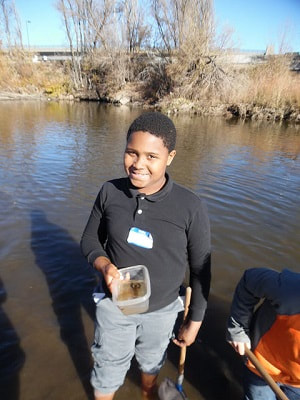


I agree with the idea that these kids have to be taught the idea of knowing how to deal with the stuff related to animals. At the same time, survival skills matter a lot, and it is very important for them to learn it at a very young age. Actually, I feel envious towards them because they already learned it. When was a kid, I was a Boy Scout but such thing was never taught to me and I was quite disappointed that I didn’t learn it. But seeing these kids happy with their exploration makes me happy too! That’s a good thing for them.